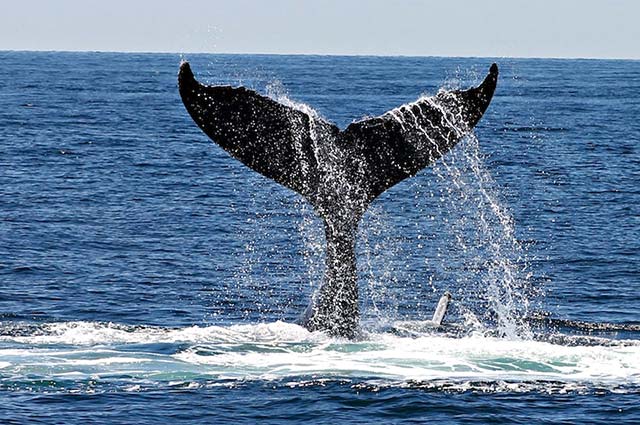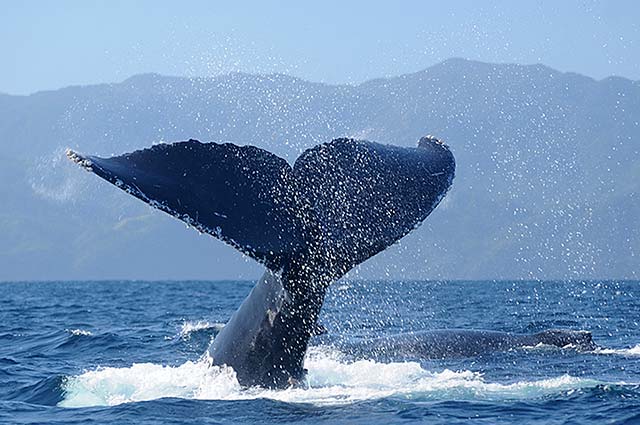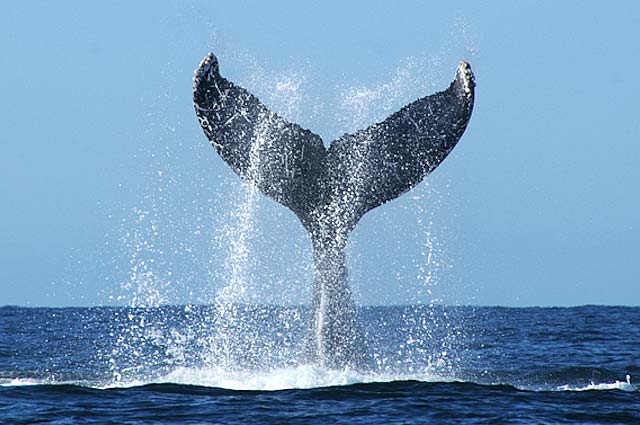Photoidentification & Humpback Whale Research In Banderas Bay
This technique consists of obtaining a photograph of the underside of the humpbacks´ fluke. The fluke presents a coloration pattern which varies from completely white to completely black, and has scars, lines, spots and notches that, together with its border, form and size of the central notch, provide the whale with unique characteristics distinctive for each adult individual (Katona & Whitehead, 1981). This allows scientists to distinguish one individual from another, just as with human fingerprints. Also, the form and scars of the dorsal fin can provide us with information about the whale’s identity. Taking photos of the underside of the flukes of humpback whales, beside showing the humpbacks magnificence, it provide us with useful information that is used to estimate population numbers, study behavior, birth rates, migration routes and much more, hence its importance.
Ecotours de México collaborates with the Humpback Whale in Banderas Bay Photoidentification Catalog, known as FIBB Catalog. To date the catalog has over 1,300 different individuals photoidentified and a database of more than 3,500 records. Astrid Frisch, co-owner of Ecotours de México is the head researcher of the Humpback Whale in Banderas Bay and Nayarit Coast Photoidentification Project.
Since 1996 the institutions: Instituto Tecnológico de Bahía de Banderas and Centro Regional de Investigación Pesquera-INP Cruz de Huanacaxtle and the whale watching tour operators, have done photoidentification projects with Humpback Whales (Megaptera novaeangliae), in Bahía de Banderas, Jalisco-Nayarit, México. In an effort to obtain more complete information in behalf of the research, conservation and protection of the species, all the photos and data were gathered in the Banderas Bay Humpback Whale Photoidentification Catalog, known as FIBB Catalog. Since the different collaborators launch from different harbors within Banderas Bay (Puerto Vallarta, Nuevo Vallarta, Cruz de Huanacaxtle and Punta de Mita), at least 60% of the Bay is covered daily, with a navigation effort of minimum 12 hours, during the whale watching season (December 8 to March 23).
A printed version of the catalog is available and it includes the results of 10 years of research, and a section about the biology and behavior of humpback whales. The Catalog has a cost of $30USD plus shipping. If you are interested in getting a copy please write to fibbcatalogo@yahoo.com Proceeds of sales benefit the Humpback Whale Research and Conservation Project.
According to the FIBB Catalog results the minimum number of humpback whales in Mexico´s coastal stock, is 1,300 individuals, since this is the number of different whale identified to date. Urbán, et al. 1999, estimates the abundance of the coastal population in 1,813 individuals (95% CI: 918-2505), and Frisch (2004) estimates that the population can reach the 2,200 individuals.
When joining efforts and collaborating with the FIBB Catalog, we are not only registering the different whales that visit Banderas Bay, we are also obtaining more information on each individual and generating a more complete catalog, which is very valuable for the study and conservation of the humpback whale, as well as for the management of the whale watching activity.
During the 10 field seasons the group effort has been increasing, and each time more and much better photos and data are gathered.
In 2004, 2005 and 2006 the FIBB Catalog collaborated with SPLASH (Structure and Population Abundance of Humpback Whales in the North Pacific) an international project, besides collaborating with the NOPP OBIS SEA MAP (Ocean Biographic Information System) project and with UNAM and UABCS.
Whale watching tour operators are important contributors for gathering data in the benefit of the research of Humpback Whales in Banderas Bay.
If you want to know more about the conservation efforts in Banderas Bay (Puerto Vallarta and Nuevo Vallarta)
The main objectives of ECOBAC are:
- Encourage marine mammal research projects in the coasts of Jalisco and Nayarit, a very important area for the conservation of species since it’s the entrance to the Sea of Cortes.
- Promote the exchange of knowledge and information in order to benefit the conservation and protection of wildlife.
- Create a wildlife conservation, information and research center.
- Promote the training of specialized ecotourism guides with courses, scholarships and workshops in order to encourage sustainable development and the conservation of wildlife.
Action Plans
- Research
- Outreach and Environmental Education
- Conservation Projects
- Ecotourism and Sustainable Development





